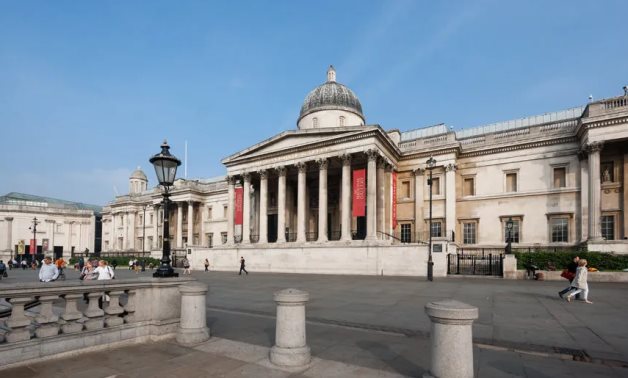
The National Art Gallery in London is one of the world’s most famous and most visited museums exclusively dedicated to painting - Inexhibit
CAIRO – 27 July 2022: At the end of 2021, the National Art Gallery in London published preliminary findings from an investigation into its ties to transatlantic slavery carried out in collaboration with the Center for the Study of the British Legacy of Slavery at University College London.
The report named individuals involved with the museum in its early decades, who profited from slavery or the slave trade either through direct enslavement of people or through financial relationships with plantation economies.
It is a long list of collectors, philanthropists, and artists. Among those named is marine insurance magnate John Julius Angerstein, whose collection of paintings by Raphael, Rubens, Van Dyck and others formed the founding will of the museum; painter Thomas Gainsborough, who benefited from caring for sugar growers in Antigua; and art collector Charles I, who in 1632 granted royal permission to guilds smuggling enslaved Africans from the coast of Guinea to the Americas, according to ARTnews.
The National Art Gallery report is part of a broader spectrum of the ways in which the art world has long benefited from slavery. The field is not new. In 1851, abolitionist activists William Wells Brown, Ellen Craft and William Craft staged a protest at the Great Gallery in London's Crystal Palace, emphasizing their presence as formerly enslaved people to emphasize that the art and industrial progress celebrated at the fair depended on wealth.
These criticisms, by abolitionists and radical black activists such as Brown in the 19th century, form an urgent part of the work going on within museums and art history.
The UK-based National Trust recently published a 115-page report on the links between historic homes, art collections under their care, and the history of slavery and colonialism.
Similar initiatives are also underway at European and American museums, including the Rijksmuseum and Rembrandthuis in Amsterdam and the Los Angeles County Museum of Art.
Aside from museums, grassroots movements and advocacy initiatives, such as Decolonize This Place, Museums Not Neutral and Strike MoMA, have put additional pressures on institutions with roots drawn from imperial heritage, slavery, and colonialism.
Comments
Leave a Comment